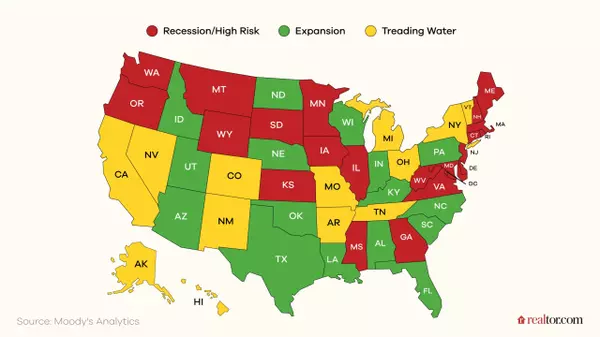Arrest Made in Pacific Palisades Fire That Killed 12 People: Jonathan Rinderknecht Charged With Destruction of Property

An arrest has been made in connection with the devastating Palisades Fire that swept through Los Angeles County last January.
Jonathan Rinderknecht, 29, aka “Jonathan Rinder” and “Jon Rinder,” of Melbourne, FL, is charged with destruction of property by means of fire, according to the U.S. Attorney's Office, Central District of California. Rinderknecht is a former Pacific Palisades resident.
"The complaint alleges that a single person’s recklessness caused one of the worst fires Los Angeles has ever seen, resulting in death and widespread destruction in Pacific Palisades,” said Acting United States Attorney Bill Essayli. "While we cannot bring back what victims lost, we hope this criminal case brings some measure of justice to those affected by this horrific tragedy."
The Department of Justice (DOJ) says law enforcement determined that the Palisades fire was a “holdover” fire—a continuation of the Lachman fire that began early in the morning on New Year’s Day 2025.
The investigation revealed firefighters quickly suppressed the Lachman Fire but did not realize the fire continued to smolder and burn underground within the root structure of dense vegetation, according to an affidavit filed with the complaint.

The U.S. Attorney's Office said a law enforcement investigation—using witness statements, video surveillance, cellphone data, and analysis of fire dynamics and patterns at the scene—found that Rinderknecht maliciously set the Lachman fire just after midnight on Jan. 1 on land owned by the Mountains Recreation and Conservation Authority (MRCA), an organization that received federal funding.
Officials say a week later, the same fire—then known as the Palisades Fire—burned federal property.
Investigators claim it all started on the evening of Dec. 31, 2024, when Rinderknecht was working as an Uber driver. Two passengers who he drove on separate trips between 10:15 p.m. and 11:15 p.m., later told law enforcement they remembered that Rinderknecht appeared agitated and angry.
Officials say that after dropping off a passenger in Pacific Palisades, Rinderknecht—who once lived in that neighborhood—drove toward Skull Rock Trailhead, parked his car, attempted to contact a former friend, and walked up the trail. He then used his iPhone to take videos at a nearby hilltop area and listened to a rap song—one he had listened to repeatedly in previous days—which has a music video that includes things being lit on fire.
At 12:12 a.m. on Jan. 1, 2025, environmental sensing platforms indicated the Lachman fire had begun. The investigation found during the next five minutes, Rinderknecht called 911 several times but didn’t get through because his iPhone was out of cell phone range. When he finally connected with 911, he was at the bottom of the hiking trail and reported the fire. By that point, a nearby resident already had reported the fire to authorities.
Investigators say Rinderknecht then left the scene in his car, passing fire engines driving in the opposite direction. He then turned around and followed the fire engines to the scene, driving at a high rate of speed. Rinderknecht walked up the same trail from earlier that night to watch the fire and the firefighters. At approximately 1:02 a.m., he used his iPhone to take more videos of the scene.
The DOJ says that during an interview with law enforcement on Jan. 24, 2025, Rinderknecht lied about where he was when he first saw the Lachman Fire. He claimed he was near the bottom of a hiking trail when he first saw the fire and called 911, but geolocation data from his iPhone carrier showed that he was standing in a clearing 30 feet from the fire as it rapidly grew.
Essayli posted on X that among the digital evidence collected during the investigation was an image reportedly created by Rinderknecht using ChatGPT that depicted a burning city.
Rinderknecht's initial court appearance is scheduled for Wednesday afternoon in the U.S. District Court in Orlando, FL.
If convicted, Rinderknecht would face a mandatory minimum sentence of five years in federal prison and a statutory maximum sentence of 20 years in federal prison.

Rebuilding process
The Palisades fire, one of two deadly wind-driven blazes that erupted Jan. 7, claimed at least 30 lives, destroyed over 16,000 structures, and scorched nearly 60,000 acres—leaving a lasting impact on homeowners, neighborhoods, and the regional housing market.
The Palisades fire, along with the Eaton fire in Altadena, devastated large swaths of residential areas, leaving entire communities flattened and displacing thousands. Investigators have not yet determined the cause of either fire, and the link between the two remains under investigation.
In the wake of the disaster, an independent review commissioned by Los Angeles County found that delayed evacuation warnings—caused by outdated alert systems and inconsistent emergency protocols—contributed to the high death toll and property losses. The report cited systemic weaknesses in communication and emergency response that hindered timely evacuations during the fast-moving fires.
The real estate implications of the fires have continued to have a lasting impact across the region. Rebuilding efforts have been slow, hampered by insurance delays, construction shortages, and zoning challenges. Many areas impacted by the fires are still under redevelopment, with local officials now under pressure to strengthen fire mitigation policies and improve future emergency responses.
According to analysis by Realtor.com®, more than 15,800 residential properties—worth an estimated $40.3 billion—are within the fire perimeters reported as of Jan. 21. These include single-family homes, condos, and townhomes, many of which are in high-value neighborhoods.
The median home value within the Palisades fire zone alone is estimated at $3 million, far higher than the Los Angeles County median of $870,500.
Although the burned areas represent less than 1% of the county’s total housing stock by number, they account for 2% of its total residential market value.
The fires’ disruption is already visible in local housing activity. New listings within the affected zones dropped nearly 45% in the weeks following the outbreak—from 94 homes in early January to just 52 by the end of the month—as sellers pulled back and uncertainty mounted. Meanwhile, listing activity across the broader L.A. market rose in line with seasonal trends.
Out-of-metro interest in L.A. real estate also spiked in the wake of the fires. On Jan. 9, just two days after the fires began, views from outside the region made up 65% of all traffic to L.A.-area for-sale listings, up from below 40% pre-fire. This could reflect a mix of curiosity and buyers exploring opportunities, while local interest appears to be rebounding as displaced residents begin searching for new housing, according to a Realtor.com report.
With thousands of homes damaged or destroyed, demand for both temporary rentals and replacement housing could push prices higher in the short term. Ongoing housing shortages and years of underbuilding have already put pressure on L.A.’s market—tensions now likely to intensify as recovery begins.
Categories
Recent Posts











"My job is to find and attract mastery-based agents to the office, protect the culture, and make sure everyone is happy! "
